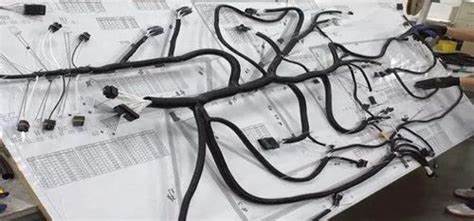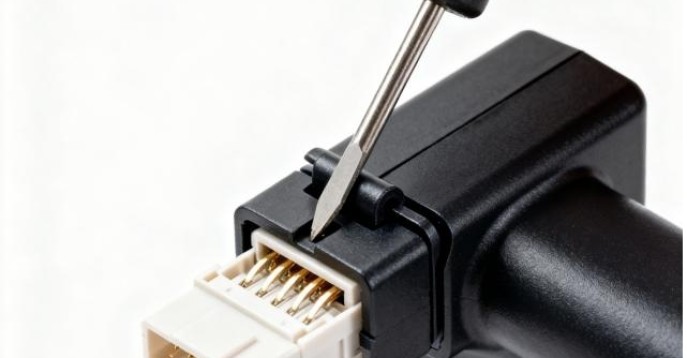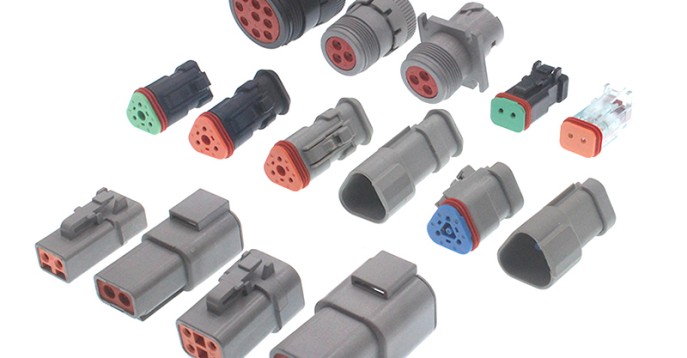Discussion on the convenience of disassembly and assembly in wiring harness layout design
Ease of assembly refers to all the parts that need to be installed and fixed on the wire harness assembly, such as the laying of the wire harness assembly itself, the buckle on the wire harness, the installation of brackets, rubber sheaths, connectors, and other auxiliary parts.
At the same time, the requirements for easy assembly are not only considered The wiring harness itself should also consider whether it will affect the installation of surrounding parts.
Wire harness segmentation and wire harness assembly installation
The segmented design of the wiring harness must meet the premise of easy assembly, and try not to add too many processes to the final assembly. For example:
Separate assembly can be used for different areas of the vehicle, such as door lines, instrument panel lines, etc.;
at the same time, it is best to complete the assembly without using special tools.
Consider the modular assembly of large assemblies as much as possible to increase the assembly speed of the production line.
For example, the transmission wiring harness and the engine wiring harness are assembled to the transmission and the engine body respectively, and then assembled to the chassis as a whole.
If the diameter of the wire harness is too large, it is necessary to reserve enough space when bending at a certain angle.
For the main branch, the bending radius of the wire harness is generally required to be greater than twice the diameter of the wire harness, so as not to affect the assembly of the wire harness if the bending space is too small.
When the wiring harness is assembled, the wiring harness should not be pulled too tightly (especially when the wiring harness is arranged horizontally), so as to avoid the position of the fixed point of the wiring harness being misplaced
When the vehicle is in a bumpy state, resulting in an instantaneous increase in the distance between the two fixed points, thereby elongating The wire harness causes pull-off/virtual connection of the internal contacts of the wire harness, changes in wire parameters, or even breaks the wires.
The wiring harness and its components should leave a safe space for fastening tools, and there should be at least a 50mm gap from the center of the nut.
Harness perforation and installation of the rubber sheath
When the wire harness passes through the hole, the common mistake is that the size of the hole only considers the thickness of the wire harness, and ignores that the connectors on the wire harness also need to pass through the hole. This is a very simple logic, but it is often made by beginners.
The opening of the sheet metal is not a random fixed point. It is necessary to consider the process of opening the sheet metal and the requirements for the sheet metal hole when installing the rubber sheath of the wire harness. Generally speaking, there are the following requirements:
The diameter of the connector with the largest outer envelope diameter must be smaller than the diameter of the sheet metal hole. A general requirement is that the diameter of the sheet metal hole is at least 1.3 times the largest dimension of the connector.
This requirement is also applicable when the wire harness passes through a closed cavity, such as the inner and outer panels of the tailgate, the cavity between the inner and outer panels of the side wall, etc., in the direction of the wire harness passing path, the diameter of the space section of the cavity is 1.3 times larger than that of the connector.
The size of the via hole corresponding to the rubber part and the thickness of the material are correct, and the diameter interference between the rubber part and the sheet metal part is greater than 1mm and less than 2mm;
The sheet metal surface along the radius of the hole within 6mm greater than the blocked hole must be smooth to ensure air tightness.
Connector installation and fixation
The connector is an important electrical part of the wiring harness assembly. When designing the wiring harness layout, attention should be paid to the installation and fixing of the connector.

There are mainly the following requirements:
The wire harness at the end of the connector needs to reserve a certain length to facilitate the insertion and removal of the connector.
Regarding the reserved length of the connectors, the key objects of attention are the combined instrument, switch panel, air-conditioning panel, audio system, and display screen, etc., which are connected to the instrument panel wiring harness, the four-door switch wiring harness and the dome light on the indoor ceiling. And switch wiring harness, in addition, the wiring harness plug-in on the auxiliary instrument, the wiring harness plug-in under the seat, and the wiring harness and the wiring harness connector also need to reserve the length.
According to the installation depth of the electrical device, the position of the socket, the opening direction of the socket and the rear space after the assembly of the electrical device, according to the convenience of operation, the reserved length of the connector on the wiring harness should be appropriately increased.
Reserved length L = installation depth h of electrical equipment + panel width of electrical equipment 0.7B + 100 (mm),
Among them: the installation depth h of the electrical device—refers to the distance from the external decorative surface to the connecting socket of the internal electrical device after the electrical device is assembled; the panel width of the electrical device 0.7B—refers to 0.7 times the height of the front decorative surface of the electrical device.
When the length is reserved, special attention should be paid to the abnormal sound and damage to the wire harness. You can avoid damage to the wire harness by adding anti-cut wrapping outside the wire harness, adding anti-cut rubber strips around sharp parts, etc., and reducing abnormal noise by wrapping the sponge.
Due to the differentiation of vehicles, the wiring harness branches that are not used during assembly need to be bundled and fixed on the main line or bracket separately. The minimum bending radius when bundling the wiring harness cannot be less than 2 times the diameter of the wiring harness.
Ensure that there is enough space for the plug-in installation. In the insertion direction of the connector, there must be a space greater than twice the length of the plug in the direction of insertion.
Harness connectors should be arranged in a position that is easy to find, within reach as much as possible, and in a position that is easy to operate with hands and tools.
The docking connector needs to be fixed, and the fixing hole in the plug-in needs to be anti-rotation to facilitate the fixing of the plug-in.
The ground terminal on the wiring harness and the positive terminal such as the starter should be anti-rotation designed.
The wire harness buckle is the main fixing method of the wire harness assembly, which determines the layout of the wire harness on the vehicle. In order to facilitate the installation and fixing of the buckle, the requirements for the layout of the buckle mainly include:
The fixing hole of the buckle of the wire harness should be opened in the plane area of the structural part as much as possible. When fixing on a curved surface, it is best to make a small plane on the structural part.
Under the premise of meeting the reliability requirements of the wiring harness layout, the number of buckles should be as few as possible, so as to reduce the assembly burden of workers and improve assembly efficiency.
The thickness of the sheet metal corresponding to the cable tie and the buckle on the plug-in must match the size of the hole, and the specifications of the corresponding welding studs must match each other.
In the installation direction of the fixed buckle, the buckle installation hole must be visible or touchable, and there must be enough space to facilitate the installation and removal of the buckle.
Selection of wire harness fasteners
During the design process of the wiring harness fixing structure and related functional boxes, common standard parts should be used as much as possible, the types of standard parts should be as few as possible, and the use of special tools in assembly and maintenance can be reduced through early design
Installation influence on surrounding parts
In the design process, the characteristics of different areas are considered in a targeted manner, and the direction of the designed wiring harness must not affect the assembly of other vehicle components;
Electromagnetic compatibility and anti-electromagnetic interference
Regarding electromagnetic compatibility and anti-electromagnetic interference, it is not only necessary to consider the selection of wire materials, such as twisted pair wires and shielded wires, but also the wiring direction of the wire harness.
In some models with the rear storage box of the battery, because the current needs to be transmitted to the electrical box in the engine compartment and the starter, there will be a large-diameter wire running through the entire vehicle, and a strong current will be passed through at all times.
At this time, how to follow the In traditional wiring, if this high-current wire is placed in the same wire harness without distinction from other signal wires, it will inevitably cause interference to the signal wires. Long distance (above 100mm), at the same time, requires the sheet metal to make a groove to lay the wire and can play a certain electromagnetic shielding effect.
--- END ---
LATEST NEWS














